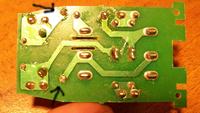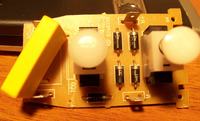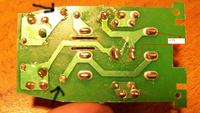what is it and how do i check if it works?

[It is not possible to give an unambiguous answer. You need to scale and, if possible, bearing on the "donor" of the element. Mariusz Ch.]
Supplement:
1st scale

2nd item comes from a kitchen mixer that has stopped working (flooded with glue, condenser wheel):

I checked the diodes, I think they are good no breakdown - they all have a comparable resistance of about 0.6 Kohm. Engine - after supplying 12V from the power supply of the desk lamp (I have no other) it starts to buzz, so I assume it is ok. I thought it was a capacitor and I replaced it, but still nothing.
I'm not an electronics engineer but I'm trying to fix it. It is not profitable to bring your gear for repair, because it will exceed its value. From the agd forum my post was removed as a lowered level.

[It is not possible to give an unambiguous answer. You need to scale and, if possible, bearing on the "donor" of the element. Mariusz Ch.]
Supplement:
1st scale

2nd item comes from a kitchen mixer that has stopped working (flooded with glue, condenser wheel):

I checked the diodes, I think they are good no breakdown - they all have a comparable resistance of about 0.6 Kohm. Engine - after supplying 12V from the power supply of the desk lamp (I have no other) it starts to buzz, so I assume it is ok. I thought it was a capacitor and I replaced it, but still nothing.
I'm not an electronics engineer but I'm trying to fix it. It is not profitable to bring your gear for repair, because it will exceed its value. From the agd forum my post was removed as a lowered level.






